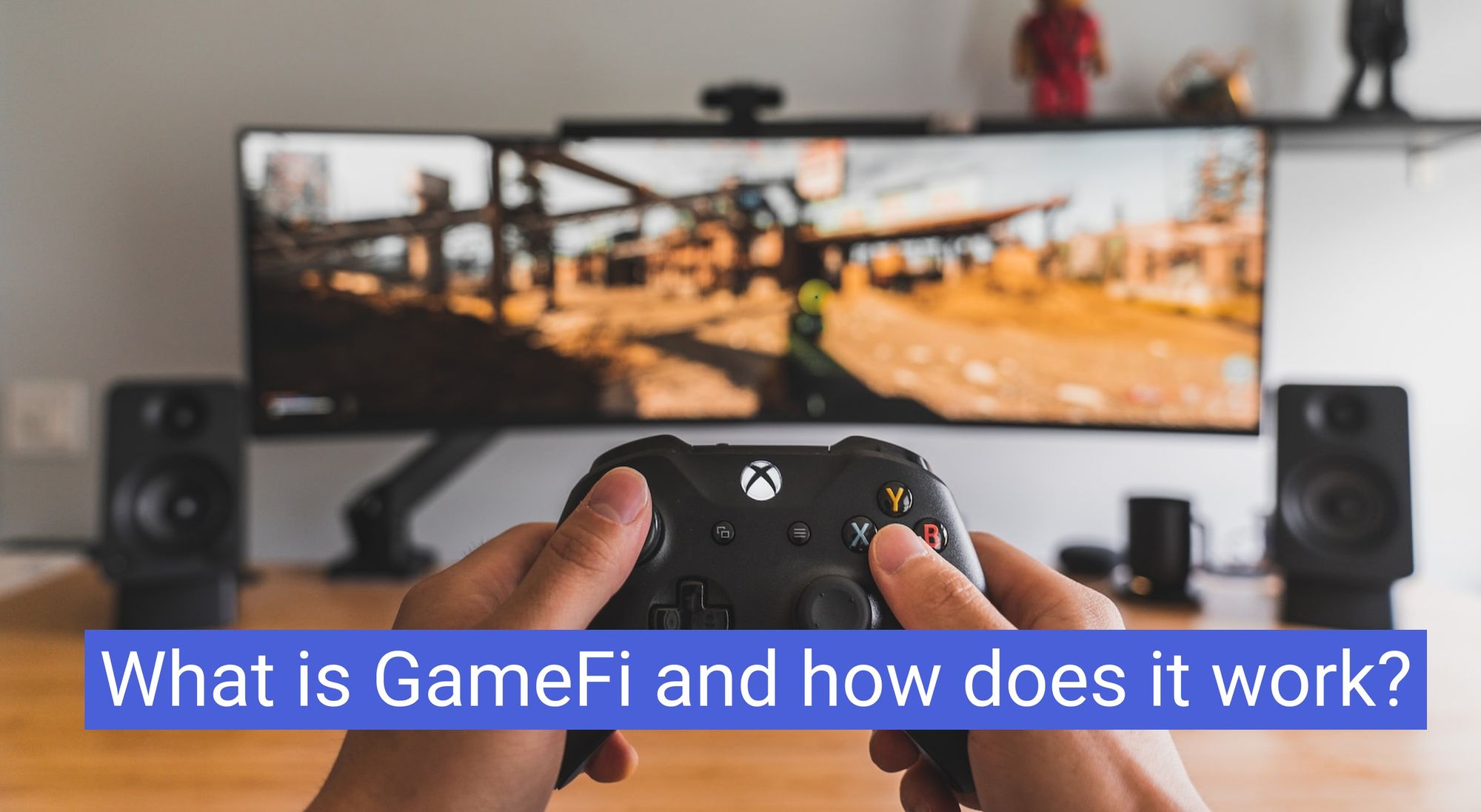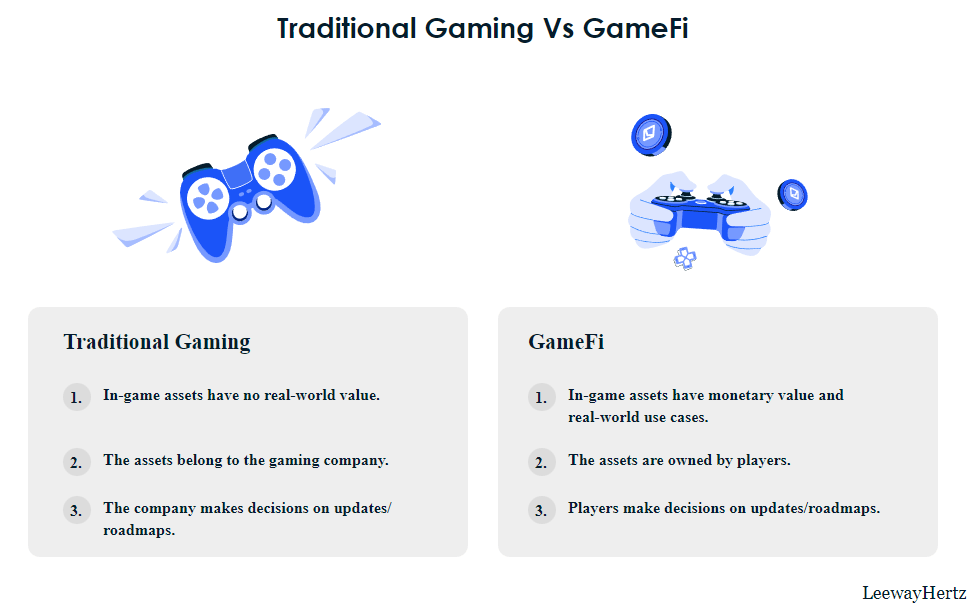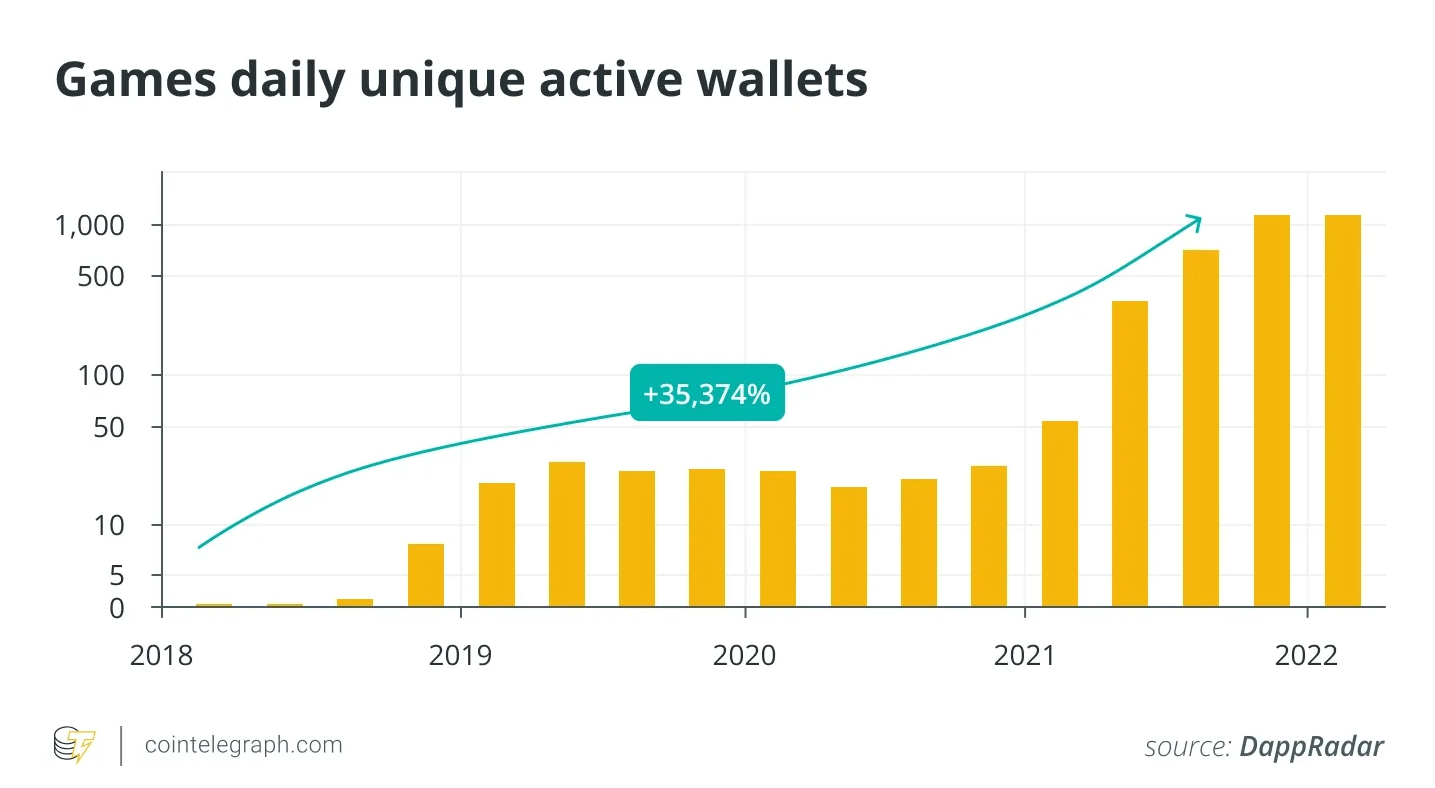What is GameFi and how does it work?

GameFi refers to play-to-earn blockchain games that offer players economic incentives to participate. Players are rewarded in cryptocurrency or non-fungible tokens (NFTs) by completing tasks, battling other players or progressing through different game levels.
GameFi is just the latest sector to emerge as a result of blockchain technology, and the industry has now gotten too big to ignore. Notably, GameFi networks have continued to thrive despite the 'crypto winter', and recent research suggests the market could reach a $74.2 billion valuation by 2031, up from $9.2 billion market cap currently.
So, what is GameFi and how does it work?
What is GameFi?
As the name implies, GameFi is the fusion of the words 'game' and 'finance'. It is a blockchain-powered gaming platform that uses a play-to-earn model to allow players to earn money through gaming. Players earn cryptocurrency or NFTs by completing certain tasks, battling opponents, progressing through a game's level or collecting loot.
Unlike traditional gaming, GameFi platforms allow players to transfer the gaming items out of the virtual world to any supported cryptocurrency wallet. From there, players can do what they want with the NFTs or cryptocurrency to cash out of their earnings.
 Source: LeewayHertz
Source: LeewayHertz
How does GameFi work?
There are a few key pillars of the GameFi network: blockchain, play-to-earn, NFTs and asset ownership. The combination of these features and technologies allows users to monetise their actions in a game.
When a player enters a GameFi project, they are incentivised to go through various in-game activities that give them the opportunity to earn cryptocurrencies or NFTs. The player, therefore, is constantly pushing through tasks, battles, quests and aims so they can earn as much as possible.
Let's look at the four main aspects of a GameFi network in more detail:
Blockchain
All GameFi projects are built on a blockchain. Blockchain technology ensures that transactions involving buying, selling or exchanging assets are open, fair and transparent. This is because all the items and their data are stored on a secure, decentralised public blockchain. The blockchain stores data on which player owns which item, which means that the game itself is owned by the players, not the game developers.
Play-to-Earn
Traditional video games use the pay-to-play model, which requires gamers to invest before they can start playing. For example, games like Call of Duty need players to purchase licenses or rolling subscriptions. In traditional video games, players cannot generate financial returns and all assets are controlled by the game developers.
In the play-to-earn model, users can receive rewards for completing gameplay objectives and can then exchange or trade their assets for money outside of the game.
NFTs
In GameFi projects, all game items like land, avatars, weapons and gold are represented by a non-fungible-token (NFT). Players can acquire these throughout the game and then exchange their NFTs for cryptocurrency which, in turn, can be exchanged for fiat money on a crypto exchange. NFTs make the characters or game items within a particular game unique, meaning they cannot be copied or faked.
Asset Ownership
In GameFi, in-game assets (as represented by NFTs) belong exclusively to the user. This digital asset ownership gives players a unique opportunity to monetise this asset how they choose - whether that be leasing it out to other gamers, selling it outright or trading it for another in-game asset.
Why GameFi is so popular
It's hard to believe that before 2015 GameFi was practically non-existent. Today, the industry attracts over 800,00 daily players and boasts a global community of millions.

One of the key benefits of GameFi is how easy it is to trade digital assets. A recent market report published by CoinMarketCap found that about 75% of gamers are willing to trade in their in-game assets for some form of currency. Users can also generate passive income from their gaming by renting out personal assets - a huge incentive for those looking to monetise their time.
Since GameFi applications sit on the blockchain, the transaction costs of moving in and out of cryptocurrency is cheap relative to traditional forms of money exchange. This is particularly true for cross-border payments, which usually cost the sender 5-7% when sending overseas with their bank.
GameFi: The Future
As blockchain applications continue to develop, the GameFi trend is expected to keep pace. The ability to own in-game assets and make money from games makes GameFi extremely attractive. This is particularly true for users in developing countries where opportunities are limited.

